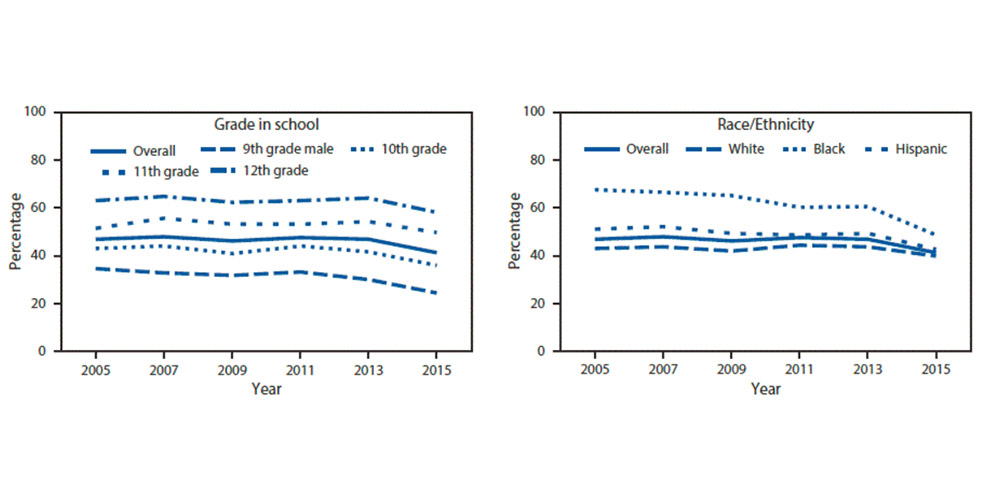Data released last week by the Centers for Disease Control and Prevention indicates the number of high school students having sex has dropped significantly.
Researchers from the CDC used data from 29 states that conducted self-reported school surveys of high school students from 2005 to 2015. It looked into overall trends by grade, race, ethnicity and sex.
During those years, sample sizes ranged from 13,917 students to 16,410 students and overall response rates ranged from 60 percent to 71 percent.
Students completed the self-administered questionnaire during one class period. Students were asked: “Have you ever had sexual intercourse?” The response options were “yes” and “no” and no definition for sexual intercourse was provided.
The states that participated in the survey were Alabama, Alaska, Arizona, Arkansas, Connecticut, Delaware, Florida, Idaho, Illinois, Indiana, Kentucky, Maine, Massachusetts, Michigan, Mississippi, Missouri, Montana, Nebraska, Nevada, New Hampshire, New York, North Carolina, North Dakota, Oklahoma, Rhode Island, South Carolina, South Dakota, West Virginia and Wyoming.
In 2005, 47 percent of students reported having had sexual intercourse. That number dropped to 41 percent in 2015, according to NOLA.
The study’s authors say more research is needed to understand the trend but believe the decline in sex among high school students is likely a contributing factor to several recent trends: the rate of teenagers giving birth reached a historic low in 2017 and teen pregnancy has been consistently dropping.
In the 10 years of data, reported sexual intercourse significantly decreased among all ninth and tenth-grade students, black students across all grades and Hispanic students in three grades, according to the CDC’s findings. There was not a drop in sexual activity for eleventh and twelfth-grade students.
The data also shows black students are more likely to have sexual intercourse in high school than other races.
“Decreases by grade and race/ethnicity represent positive changes among groups of students who have been determined in previous studies to be at higher risk for negative outcomes associated with early sexual initiation,” said the findings.
Between 2013 and 2015 alone, a significant drop can be seen in the data. In 2013, 46.8 percent of students reported having sex. In 2015, that number dropped to 41.2 percent.
For black students, it went from 60.6 percent to 48.5 percent. For Hispanic students, it went from 49.2 percent to 42.5 percent. For white students, it went from 43.7 percent to 39.9 percent.
The survey also found 32 percent of ninth grade boys said they had sex in 2013. That number dropped to 27.3 percent in 2015. For ninth grade girls, that number dropped from 28.1 percent to 20.7 percent.
Although the CDC did not look at potential reasons for why fewer students are having sex, researchers point to several changes in the U.S. from 2005 to 2015 that may have contributed to the drop.
One reason may be an increase in technology and time spent on social media. Another may be requirements and funding for education in preventing teen pregnancy and sexually transmitted diseases.
The CDC says the decline in younger people having sex is a positive change for public health. Having sex at an early age is associated with having more sexual partners overall, not using condoms, sexually transmitted infections and teen pregnancy.













